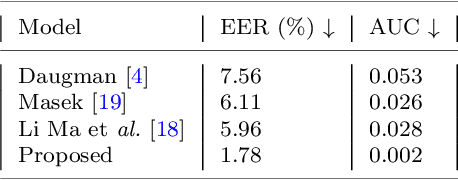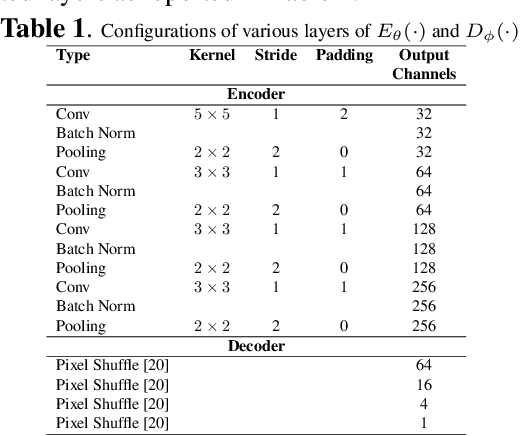Manashi Chakraborty
Texture Aware Autoencoder Pre-training And Pairwise Learning Refinement For Improved Iris Recognition
Feb 15, 2022



Abstract:This paper presents a texture aware end-to-end trainable iris recognition system, specifically designed for datasets like iris having limited training data. We build upon our previous stagewise learning framework with certain key optimization and architectural innovations. First, we pretrain a Stage-1 encoder network with an unsupervised autoencoder learning optimized with an additional data relation loss on top of usual reconstruction loss. The data relation loss enables learning better texture representation which is pivotal for a texture rich dataset such as iris. Robustness of Stage-1 feature representation is further enhanced with an auxiliary denoising task. Such pre-training proves beneficial for effectively training deep networks on data constrained iris datasets. Next, in Stage-2 supervised refinement, we design a pairwise learning architecture for an end-to-end trainable iris recognition system. The pairwise learning includes the task of iris matching inside the training pipeline itself and results in significant improvement in recognition performance compared to usual offline matching. We validate our model across three publicly available iris datasets and the proposed model consistently outperforms both traditional and deep learning baselines for both Within-Dataset and Cross-Dataset configurations
Unsupervised Pre-trained, Texture Aware And Lightweight Model for Deep Learning-Based Iris Recognition Under Limited Annotated Data
Feb 20, 2020



Abstract:In this paper, we present a texture aware lightweight deep learning framework for iris recognition. Our contributions are primarily three fold. Firstly, to address the dearth of labelled iris data, we propose a reconstruction loss guided unsupervised pre-training stage followed by supervised refinement. This drives the network weights to focus on discriminative iris texture patterns. Next, we propose several texture aware improvisations inside a Convolution Neural Net to better leverage iris textures. Finally, we show that our systematic training and architectural choices enable us to design an efficient framework with upto 100X fewer parameters than contemporary deep learning baselines yet achieve better recognition performance for within and cross dataset evaluations.
 Add to Chrome
Add to Chrome Add to Firefox
Add to Firefox Add to Edge
Add to Edge